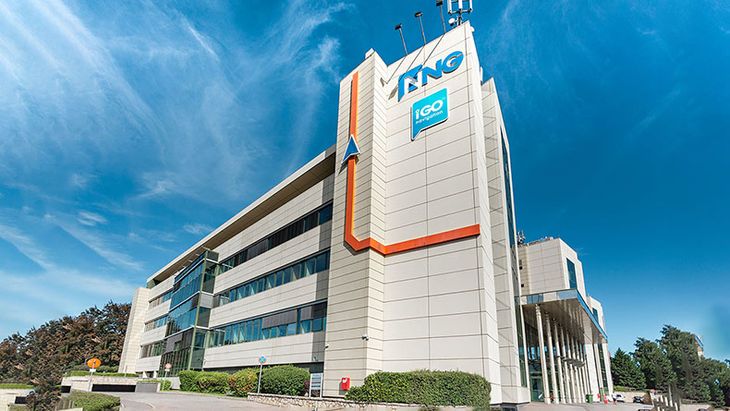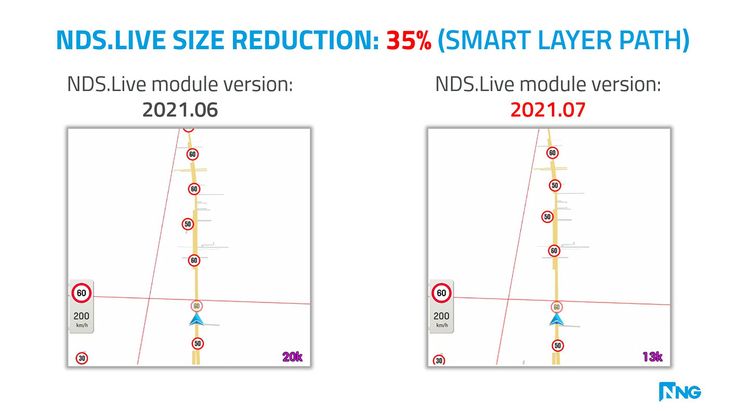Data is the new oil. We have probably all heard this quote in one form or another. Up to 2025, global data creation is projected to grow to more than 180 zettabytes. As wonderful as this development may seem in many respects – just think of the enormous wealth of knowledge: The massive data growth is also accompanied by numerous challenges. Storage space, data formats, and data compression are some of them. These topics have been a key area of the NDS format specification because storage space, advantages of relational databases, and compression are key in automotive use cases. That’s why the members of the NDS Association are experts in this field. Otto Nyiro, Director of the NDS Competence Center at NNG explains how NNG iGO.AHEAD uses NDS.Live to achieve significant minimization of data consumption with their ISA (Intelligent Speed Assistance) solution: “That’s a major achievement thanks to leveraging the NDS.Live specification.”
NDS Association member NNG is a global automotive software supplier, delivering solutions for hybrid navigation, cyber security, and user experience markets. NNG iGO.AHEAD is a scalable, adaptive, and cost effective ADAS data delivery platform. It supports cloud-based-positioning, map-matching, and horizon generation, streaming only the map tile or path to drastically minimize cellular data consumption. Nyiro and his team of developers also use NDS LiveLab implementation of the NDS.Live path service. “We can now better inspect data, LiveLab services and visualize data”, says Nyiro.

SmartLayers within NDS.Live allow service nodes to combine arbitrary binary components, or data layers, into a single packaged response frame without depending on the modules that provide the data layers. NDS.Live defines three types of SmartLayers: SmartLayerTiles, SmartLayerPath, and SmartLayerObjects. They have a similar structure but differ in the entity they cover: a single map tile holds data of a spatial area, a path provides data along a spatial line, and a specific object provides data that is not bound to any predefined spatial extent. For the ISA solution, NNG’s Smart Layer service fetches the layers: road, road geometry, characteristics, and rules. These four layers can be quite big. Dense road networks such as inner-city centers obviously have a high data density and result in higher data consumption than rural areas. NNG actively contributed to the discussion within the NDS working groups on how to optimize for size. By then migrating to the latest, further optimized NDS.Live version the NNG developers saw immediate lower data consumption realized.
In direct comparison with version 2021.06, data consumption of NDS.Live based solutions using version 2021.07 is 38 percent lower. The route of a test scenario with a total length of 212 kilometers had the same start and end point and used urban as well as rural roads, motorways, and dual carriageways. Nyiro: “The additional benefit of using NDS.Live is achieving more flexibility for future map use cases. We are fetching the same data layers required, but data consumption is significantly less than downloading tiles. Especially when adding up the total annual data consumption this is very relevant.” And that is why, when NNG migrated their whole solution to NDS.Live 2021.07, settings, data layers, and routes etc., stayed the same.

Furthermore, NNG iGO.AHEAD manages data delivery by utilizing the NDS.Live Smart Layer Path service, to optimize map matching in the cloud (NDS.Live Vehicle Pose), electronic horizon calculation in the cloud (NDS.Live Vehicle Horizon Service), and electronic horizon map path (NDS.Live Smart Layer Path Service), adding stubs based on topological selection, as well as continuous path caching for later re-use. The NDS.Live service interface helps to retrieve the map matched position of the car. Based on this information the next step is an electronic horizon calculation in the cloud. Since the map matched position is already available, the next segment of the path can be requested immediately. Stubs additionally help to provide seamless data for the ISA use case.
NNG is developing this new product making use of NDS.Live specification options and opportunities. NDS.Live Data Layers such as road layer, speed limits, circular connectivity, and ADAS are published by HERE. These are proxied by the NNG cloud. On the vehicle client side, the vehicle pose is sent to an NNG service. Vehicle progress and paths are simulated from tile to tile.
With NDS LiveLab, developers can easily inspect the service, data layers and content, properties, and attributes. Otto Nyiro summarizes: “NDS.Live Lab is a great tool for developers to easily inspect the service and what is retrieved. The map viewer visualizes retrieved data layers clearly.”
Further information on this topic can be found in the free webinar „Making intelligent speed assistance easy – a guide for OEMs“ by NNG and HERE. You can learn how to overcome data freshness challenges with a scalable cloud-based delivery solution, and how to minimize cellular data needs by up to 70 percent with intelligent map updates.
Back to news →